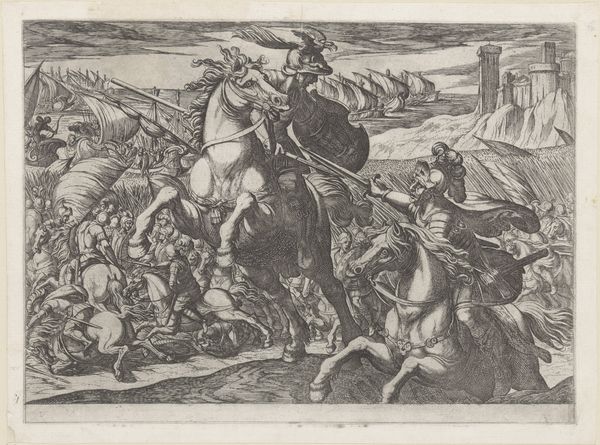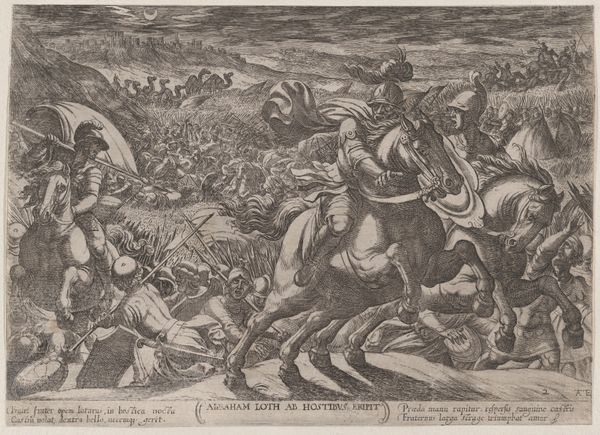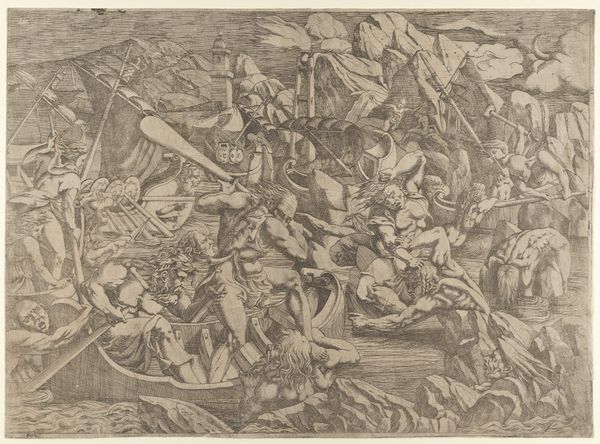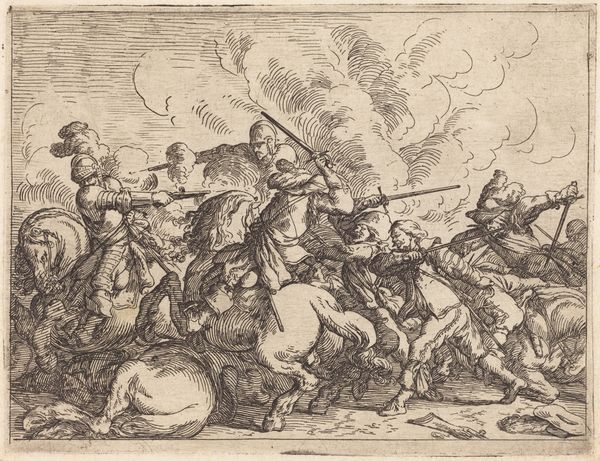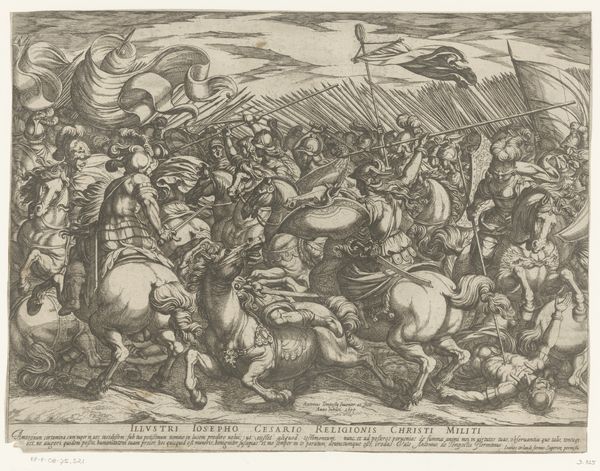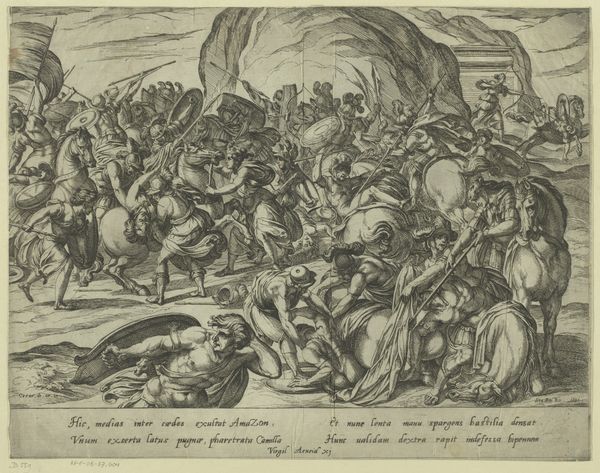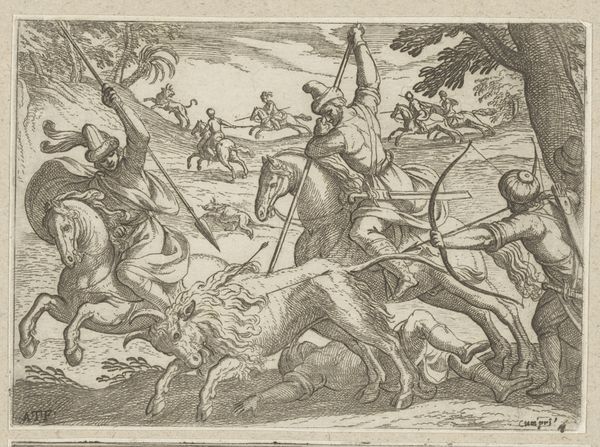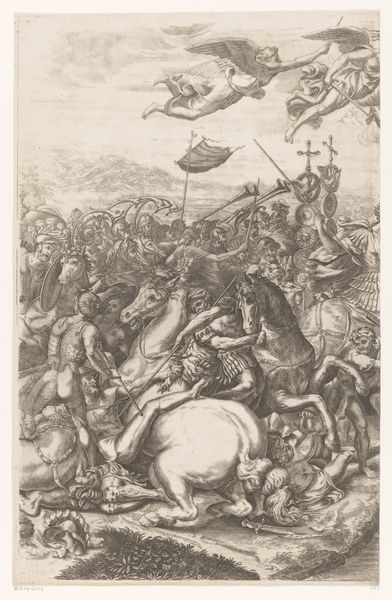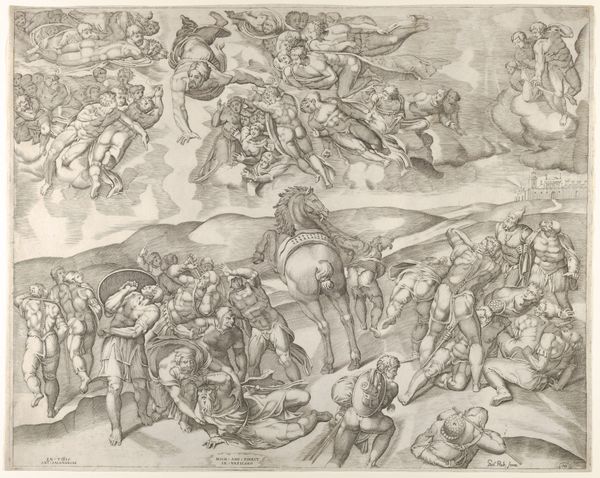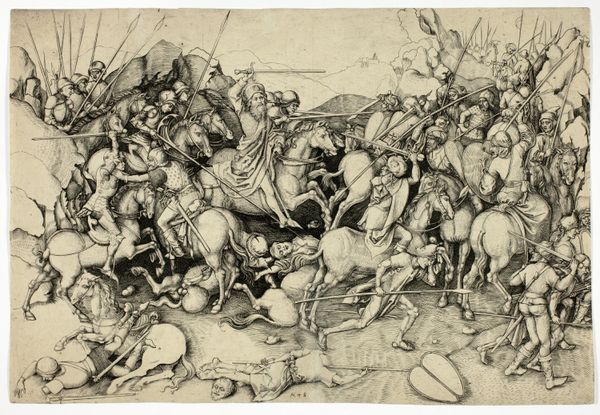
Old Age (Night) from The Four Ages of Man and Death with the Last Judgment 1575 - 1619
0:00
0:00
drawing, print, engraving
#
drawing
#
medieval
#
flâneur
#
allegory
#
narrative-art
# print
#
death
#
mannerism
#
figuration
#
vanitas
#
line
#
history-painting
#
engraving
Dimensions: Sheet: 9 x 12 1/2 in. (22.9 x 31.7 cm) Plate: 8 11/16 x 12 3/16 in. (22.1 x 30.9 cm)
Copyright: Public Domain
Editor: So, this print, "Old Age (Night) from The Four Ages of Man and Death with the Last Judgment" by Hieronymus Wierix, dating from around 1575 to 1619…it's pretty intense. The composition feels really crowded and kind of disturbing. What do you see in it? Curator: I see a potent allegory about power, mortality, and societal structures. Wierix presents a chilling vision, a Memento Mori that reflected the anxieties of his time, doesn’t he? Note how Death and Time ride roughshod over bodies, suggesting the indiscriminate nature of their dominion. The elite aren’t spared any more than the impoverished are in such depictions. Editor: It feels like everyone is being trampled – literally! I’m thinking about today and how certain groups are disproportionately affected by systemic issues. Is there something similar here? Curator: Absolutely. Consider how disease and warfare historically impacted marginalized communities more severely, highlighting existing inequalities. The print shows Time and Death but who or what are Time and Death really serving? This isn't simply about mortality; it's about who benefits, or rather, continues to hold power when mortality becomes an active presence in how society distributes its care, and its dangers. Who, do you think, had access to the best means to deal with an untimely end, or an outbreak of pestilence? Editor: It sounds like it's a visual critique about class and power during that time? Like, who gets to live well, and who is left vulnerable? Curator: Precisely. The print serves as a stark commentary. What can *we* learn about structures and assumptions that continue to echo today? Editor: This is much darker and more relevant than I initially thought. I now see it as not just a historical piece, but as something that is actually saying quite a bit about societal inequities. Curator: Yes, and that connection to contemporary struggles gives this artwork continued meaning, doesn't it? The interrogation of these historical visual texts makes it impossible for me to perceive them in the original, detached contexts that they are frequently placed within. What do we learn when we remove detachment?
Comments
No comments
Be the first to comment and join the conversation on the ultimate creative platform.
